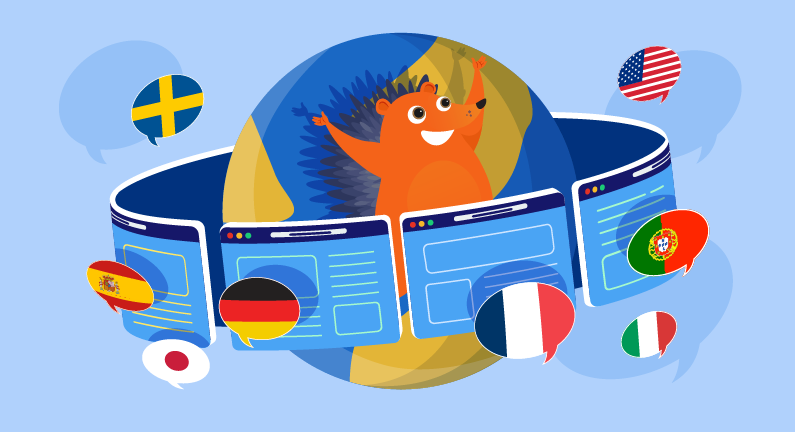
by jsendak | Apr 30, 2025 | Namecheap
Mastering Domain Dynamics: A Strategic Guide for SEO Excellence
In the digital era, a domain name serves as much more than a mere address for a website—it is the cornerstone of your online identity and plays a pivotal role in your site’s search engine optimization (SEO) journey. With the intense competition in the digital marketplace, selecting the right domain name is a critical strategic decision, one that requires a comprehensive understanding of SEO implications. But what exactly constitutes an SEO-friendly domain name, and how can one ensure that their domain choice contributes positively to their website’s visibility and ranking? This article will unravel the complexities of domain names through the lens of SEO, outlining the essential principles for selection and the necessitated due diligence for verification.
Foundational Elements of Domain Name Selection
- Conciseness and Clarity: How brevity and precision in a domain name can significantly impact memorability and brand recognition.
- Keyword Integration: Understanding the weight of keywords in domain names and their influence on SEO performance.
- Brand Reflection: The importance of aligning your domain name with your brand identity for coherent marketing and visibility.
The Art of Domain Choice Verification
- Analyzing Historical Baggage: Investigating a domain’s past for potential red flags which might affect SEO rankings.
- Domain Authority Assessment: Gauging the value of a domain name in terms of its established trust and authoritative presence online.
- Legality and Trademark Clearance: Ensuring the chosen domain name does not infringe upon intellectual property laws or trademarks.
Selecting the perfect domain name is no small feat—it’s a careful balance between SEO best practices, brand representation, and user experience. Additionally, verification steps are crucial to avoid inheriting any existing penalties or limitations associated with the domain. By diving into these topics, we will equip you with the knowledge to make an informed, SEO-conscious decision that lays a solid foundation for your website’s future.
“An ideal domain name is the first step in making a statement on the internet; it’s a powerful signal to both users and search engines about your site’s purpose, relevance, and authority.”
Join us as we dissect the key principles of domain name selection and the verification process that follows, setting the stage for SEO success and a robust online presence.

Let’s examine the key principles for choosing and checking a domain name to give your website the best SEO for long-term success.
Read the original article

by jsendak | Apr 23, 2025 | Namecheap
Embarking on the Entrepreneurial Journey: Dissecting the Business Starter Kit
The allure of entrepreneurship often brings with it a maelstrom of challenges and decisions that can leave the nascent business owner feeling adrift in a sea of uncertainty. Initiating a start-up is a venture ripe with potential, yet brimming with complexities. From legal considerations to the intricacies of digital presence, the path can be daunting. In this critical landscape, resources that streamline the process are invaluable. Namecheap, recognizing the hurdles that entrepreneurs face, has stepped into this breach with its Business Starter Kit. This comprehensive resource aims to simplify the arduous steps of business initiation by providing tools tailored to the needs of aspiring business owners.
Navigating the Business Formation Maze
A considerable aspect of starting a business lies in the ability to navigate the complex maze of company formation. With the Business Starter Kit, individuals are offered guidance through this labyrinth. What exactly does the kit entail, and how does it compare to other market solutions? We will scrutinize the components made available and assess their efficacy in smoothing the passage from concept to entity.
Digital Identity and Online Presence
An undeniable element of contemporary business success is establishing a robust online presence. Herein, we examine how the Business Starter Kit purports to assist in crafting a digital identity, from securing a domain to building a professional website. The merits of these offerings will be compared with existing web development and hosting solutions to determine their value in the competitive digital landscape.
Cost-Effectiveness and Accessibility
The financial burden of business start-ups cannot be overstated. The Business Starter Kit is presented as a free, all-in-one solution, but what does this mean in terms of real-world application? We will delve into the cost structures often associated with starting a business and evaluate how Namecheap’s Kit potentially mitigates these expenses.
Conclusion: The Road to Entrepreneurial Success
Therein lies the promise of the Business Starter Kit: to offer a beacon of support for those embarking on the entrepreneurial quest. Our examination will culminate in a comprehensive overview, weighing the benefits against the potential shortcomings. We invite you to uncover whether this solution stands as a pivotal tool for the aspiring entrepreneur or merely as one of many aids in the challenging journey of business creation.
This HTML content block is ready to be embedded into a WordPress post and is designed to engage readers by introducing the key points that the article will explore in greater depth—namely the components of the Business Starter Kit by Namecheap, its functionalities in terms of business formation and online presence, its cost-effectiveness compared to other solutions, finishing with a summarizing conclusion.

Starting a business is exciting but can feel overwhelming. That’s why Namecheap created the Business Starter Kit — a free, all-in-one solution.
Read the original article

by jsendak | Apr 18, 2025 | Namecheap
Mastering the Art of Website Localization: Small Tweaks, Big Impact
In an era where digital presence is a critical component of global business success, localization emerges as a vital strategy that goes far beyond mere translation. The advent of the internet has seemingly erased geographical barriers, connecting consumers and businesses worldwide. However, this digital proximity has also highlighted the importance of local sensibilities and preferences. As companies strive to expand their reach, they must recognize that the key to resonating with an international audience lies in nuanced customizations that reflect cultural understanding and relevance. This article delves into the compelling reasons for refining your website’s localization tactics and illustrates how seemingly minor adjustments can create a more welcoming environment for your international clientele.
Embracing Cultural Nuances: More Than Just Language
When it comes to localization, language is just the tip of the iceberg. Cultural nuances influence not only communication but also the visual aesthetic, consumer behavior, and even value perception. From the color schemes that can evoke different emotions to the layout that meets cultural navigation patterns, each element can either forge a connection or create a chasm with your international customers. This discussion will reveal the subtle yet powerful tweaks that can align your website with the cultural expectations of your target market.
Conversion Optimization: The Localization Advantage
Localizing your website is not just about being understood; it’s about being relatable, and consequently, more persuasive. Small details such as local currencies, units of measure, and payment options can significantly enhance user experience and boost confidence in your brand. Furthermore, we will explore how local search engine optimization can increase visibility and drive traffic, thereby amplifying the potential for higher conversion rates.
Localized Content Strategy: Building Trust and Authority
Content that resonates on a local level can transform your brand from an outsider to a community member. We will discuss the importance of a content strategy tailored to local interests and issues, demonstrating authenticity and commitment to your international customers. Customer testimonials, regional case studies, and locally relevant examples can also play a vital role in building trust and authority in new markets.
The Path Forward: Making the Right Tweaks for Global Appeal
- Adapting Visuals and UI: How subtle changes in design can align with cultural preferences.
- Currency and Payment Localization: Simplifying the transaction process for international customers.
- Cultural Customization: Tweaking content to reflect local customs, humor, and references.
- SEO and SEM Localization: Techniques for improving local discoverability and relevance.
Incorporating these tailored adjustments requires careful insight and consideration, but the return on investment can be substantial. By fostering a deeper sense of familiarity and ease, businesses can not only attract a wider audience but also ensure that their international customers remain engaged and satisfied. As we examine these elements in greater depth, readers should prepare to harness the transformative power of localization for a truly impactful global digital strategy.

Let’s look at why minor website tweaks for localization can help your international customers feel more at home and drive conversions
Read the original article

by jsendak | Apr 17, 2025 | Namecheap
Unlocking the Power of Google Analytics: A Guide to Interpreting Key Website Metrics
The digital landscape offers a plethora of tools for website owners to track and analyze their online presence, with Google Analytics standing as a beacon for those seeking comprehensive insight into their website’s performance. However, the wealth of data available through this potent analytical tool can be overwhelming. This article demystifies Google Analytics, breaking down the complexities to empower you with the knowledge needed to make informed decisions. We delve into crucial metrics such as site visits, conversion rates, session duration, and traffic sources—each a vital cog in the wheel of online success.
Why Every Click Counts: The Importance of Website Traffic Analysis
Understanding your audience is the first step towards catering to their needs effectively. By examining site visits, you not only quantify your audience but also start to understand the reach of your content. Tracking these visits over time can reveal trends and patterns, giving you a clearer picture of your website’s growth or the need for strategic adjustments.
The Conversion Rate Conundrum: Measuring Success Beyond Page Views
Although a high number of page views may seem promising, they only tell part of the story. It is the conversion rate—that critical point where a visitor becomes a customer—that truly speaks volumes about the efficacy of your site. This pivotal metric is a testament to how well your site aligns with user intent and market demand.
Engagement or Bounce: Interpreting Session Duration
How long someone stays on your site sheds light on their engagement level. Monitoring session durations can indicate whether your content resonates with visitors or if there’s room for improvement to make your website more compelling.
Unraveling the Web: Understanding Traffic Sources
Knowing where your visitors are coming from is indispensable for optimizing your marketing efforts. Whether it’s direct traffic, referral links, search engines, or social media driving your audience, each channel offers unique insights and opportunities for growth.
In the forthcoming sections, we will provide a straightforward guide to harnessing the features of Google Analytics. We’ll ensure that even beginners can feel confident in interpreting and utilizing the data from these key areas to refine their online strategy and achieve measurable success.
Navigating the Analytics Dashboard: A Step-by-Step Approach
- Accessing and understanding the Google Analytics interface.
- Identifying and tracking the right metrics for your website goals.
- Interpreting the data to make meaningful adjustments to your online strategy.
Conclusion: Turning Data Into Action
Armed with a clear understanding of these fundamental Google Analytics metrics, you will be well on your way to optimizing your website’s performance. Stay tuned as we delve deeper into each topic, ensuring you are prepared to transform raw data into concrete actions that drive engagement and conversions.

Once you have a website, you should track your site visits, conversion rate, how long people stay on your site, and where they came from. With Google Analytics, you can gather all of that data in a snap, and with our guide, we make it simple to interpret your results.
Read the original article

by jsendak | Apr 15, 2025 | Namecheap
Unveiling Consumer Perceptions of AI-Generated Content: A Critical Inquiry
In an age where artificial intelligence (AI) is rapidly advancing, the distinction between content created by humans and machines is becoming increasingly blurred. With AI-generated text, images, and even videos permeating various aspects of our digital lives, the question of consumer perception of these AI creations takes on heightened significance. This critical exploration seeks to delve into the nuanced views that consumers hold towards AI-generated content and unpack the implications for content creators, technologists, and consumers alike.
As we prepare to navigate the complexities of this topic, it is essential to recognize the multifaceted nature of consumer engagement with AI-generated content. The core issues at hand span the range of conscious acceptance to unwitting consumption. Notably, we must ask: What do consumers actually think of AI-generated content? Moreover, the ethical dimensions of this question loom large, prompting a related line of inquiry: Does it matter if consumers can’t distinguish between AI-generated and human-created content?
The forthcoming discussion aims to dissect these questions with a critical lens, providing readers with both empirical insights and philosophical perspectives. We shall explore the tipping points in consumer trust, the significance of transparency in content creation, and the potential shifts in the creative landscape prompted by AI’s influence.
Areas of Exploration
- Consumer Attitudes: Examining studies and surveys that shed light on how different demographics perceive and react to AI-generated content.
- Transparency and Ethics: Discussing the moral imperatives and potential regulatory responses surrounding the labeling of AI-generated content.
- Quality and Authenticity: Assessing whether the quality and authenticity of content are compromised in the age of AI and how consumers are discerning these elements.
- The Authenticity Debate: Delving into the philosophical debate on whether the origin (AI or human) of content matters to its intrinsic value or utility.
- Impact on the Creative Industry: Consideration of how AI-generated content is redefining the roles of content creators, artists, and curators.
Through this analytical lead-in, we pave the path for an in-depth exploration of not just the current landscape but also the emerging trends in consumer interactions with AI-generated content. The article that follows is poised to foster a better understanding among content creators, marketers, technologists, and consumers, all of whom participate in shaping and consuming the content at the heart of our digital ecosystem.

What do consumers actually think of AI-generated content? Does it matter if they can’t tell if something is AI-generated?
Read the original article

by jsendak | Apr 6, 2025 | Namecheap
Navigating the Upcoming Domain Registry Price Surge: Impact Analysis and Strategic Responses
In the dynamic realm of the internet, domain registration and maintenance costs have long been a source of consideration for businesses and individuals alike. As we approach April 1, 2025, a significant shift looms over the digital landscape. On this date, the domain registry responsible for a number of our domains has announced a universal spike in the costs associated with domain renewals, registrations, and transfers—a move that warrants a proactive and critical examination.
The Implications of Increased Domain Costs
This cost increment poses a multi-faceted challenge that goes beyond a mere hike in prices. It beckons questions about the broader economic and strategic implications for entities maintaining an online presence. For many, domains are not mere addresses, but integral components of brand identity, digital marketing strategies, and ensuring the accessibility of online services. The impending price rise brings to the fore concerns surrounding budget adjustments, the prioritization of online assets, and the potential need for strategic domain portfolio realignment.
Long-Term Strategies for Navigating the Price Increase
With strategic foresight, the increased expenditure on domains can be mitigated through a variety of approaches. Entities may need to consider early renewals, bulk registrations, or even the discerning sale of underutilized assets. Additionally, the practice of domain name consolidation and reassessment of TLD (Top-Level Domain) preferences may offer alternative avenues for cost-efficiency.
- Early Renewals: Locking in current rates before the surge could secure savings in the long term.
- Bulk Registrations: Leveraging package deals may be more cost-effective under the revised pricing structure.
- Leveraging Alternative TLDs: Exploring less popular yet fitting TLDs could uncover hidden value amid price increases.
The Broader Impact on Internet Real Estate
The surge in domain prices is indicative of a larger conversation surrounding the value and commodification of internet real estate. As we scrutinize the impending changes, the conversation extends to stakeholders across the board. From small-scale bloggers to large enterprises, the reverberations of this shift will be felt sector-wide, prompting a reassessment of how online spaces are valued and leveraged in an increasingly digital economy.
As April 1, 2025, draws nearer, it’s imperative for domain holders to not only brace for impact but to also critically assess and adapt their digital strategies in anticipation of the changing tides. What emerges from this challenge could be a new paradigm of resourcefulness and strategic acumen in the domain name landscape.
Our in-depth exploration will delineate the contours of this price rise, offering actionable intelligence and preparing readers to navigate this change with strategic resilience.

On April 1, 2025, the domain registry for some of our domains will implement universal price increases for renewals, registrations, and transfers.
Read the original article






